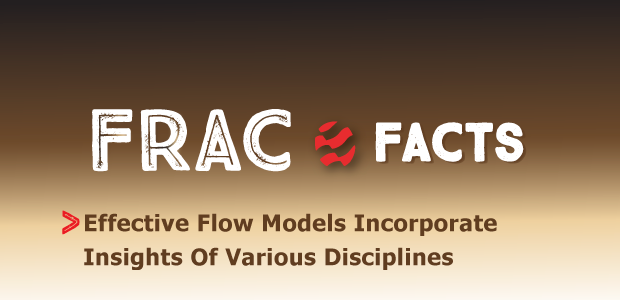
Effective Flow Models Incorporate Insights Of Various Disciplines
By Jeremy Viscomi
A classic oil field challenge, as well as fodder for countless jokes, is how we get our engineers, geologists and geophysicists in the same room, and–more importantly–to agree. With the advent of events such as the Unconventional Resources Technology Conference, large strides have been made in linking these three disciplines to improve operational efficiency and productivity.
In that same collaborative spirit, Petroleum Technology Transfer Council recently hosted a course titled, “Construction of Fractured Reservoir Models for Flow Simulation Incorporating Geology Geophysics and Geomechanics.” The course brought together a variety of experts to discuss the elements necessary to build an optimized reservoir flow model: James Gilman from iReservoir, Christopher Zahm from the University of Texas Bureau of Economic Geology and Renaldo Michelena from SeisPetro Geoconsulting.
Instructors noted the lack of a single workflow to generate fracture models. In fact, when creating a natural fracture model for flow simulation it is important to consider each aspect of the fractures and their relation to flow. Fracture factors including origin, geometry and quality all deserve consideration.
When looking at a reservoir flow model, a combination of a matrix, geomechanical and natural fracture model is necessary to feed an adequate flow simulation model. The matrix model requires inputting rock properties, log facies, core relations, and seismic and production data, which makes it possible to generate porosity and permeability. On the geomechanical side it’s important to consider stress, pore pressure and rock parameters, variables that establish the permeability changes versus stress.
Finally, from the natural fracture model faults, outcrop, seismic data combined with stress and mechanical stratigraphy and production data all must be considered. This information will help generate natural fracture porosity and permeability figures as well as the area of natural fractures. Combining these factors with production and SCAL data, as well as fluid properties and water saturation, helps establish the flow simulation. This information then can be used to validate the geologic models, make development decisions and create production forecasts.
The course was divided into four, four-hour sessions highlighting each area of interest. The first session discussed essential geologic and engineering concepts. Key discussion items included an overview of natural fractured reservoirs, their characteristics and importance. From there, the instructors highlighted the impact of natural fractures on overall reservoir performance. Tight unconventional reservoirs were discussed with specific information related to mechanical stratigraphy in core, well, logs and seismic data. A highlight of the session included an exercise designed to help participants interpret tight carbonate mechanical stratigraphy. The session concluded with a discussion of engineering data for naturally fractured reservoirs.
Session two considered the importance of seismic, geomechanics and fracture models, and featured a continued discussion of tight unconventional reservoirs and seismic properties for fracture characterization. A discussion about discrete fracture network versus continuum natural fracture descriptions was particularly significant. According to the instructors, CFM methodologies can be much faster than DFN characterization, which can reduce modeling time, especially while running multiple sensitivities.
Session three featured geologic concepts of conventional reservoirs and looked at tight unconventional reservoirs, specifically modeling the permeability of reactivated fractures. Participants got the opportunity to participate in exercises that highlighted pressure transient response time and conceptual integrated fault damage. Instructors also emphasized the importance of outcrop analogs in fracture modeling as well as rock facies, and core properties in a conventional fractured reservoir.
The final session discussed calibrating and integrating each of the first three components and how they fit into flow model development. The session began by discussing conventional fractured reservoirs using rock properties from 3-D seismic as well as special consideration for simulation. Finally, the session concluded with a talk about putting it all together by integrating outcrop, core, well logs and seismic for improved reservoir models.
The course’s key takeaway suggests that combining multiple disciplines and data sources is necessary to develop an adequate flow model. Moreover, the best fracture models are not platform- or software-specific, but utilize and blend all available data and relevant analogs. Consistently developed continuum fracture models and upscaled discrete fracture networks can yield very similar results. Additionally, geoscientists are responsible for making sure their fracture models are ready to use. At the same time, engineers are responsible for asking geoscientists about anything that does not work. Rock properties are also very important to fracture development and we must recognize that not all rocks fracture the same even under similar conditions. Geomechanics information is crucial to estimate the quality of the natural fractures.
For more information, visit www.pttc.org.

JEREMY VISCOMI is a strategic marketing expert for the oil and gas industry. Among his many roles, he serves as the Mid-Continent regional lead for the Petroleum Technology Transfer Council, providing independent operators with access to emerging technology aimed at reducing risk and growing profits.
For other great articles about exploration, drilling, completions and production, subscribe to The American Oil & Gas Reporter and bookmark www.aogr.com.






